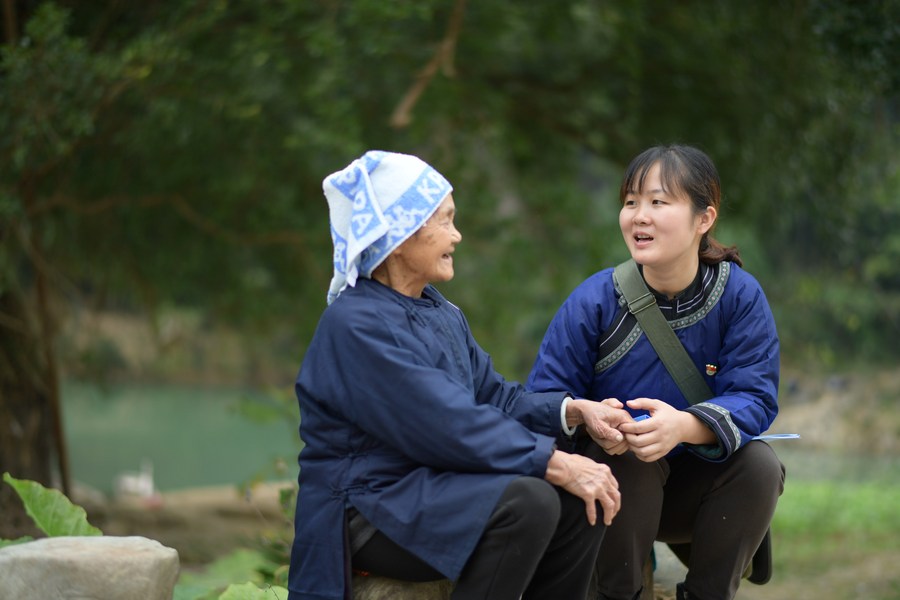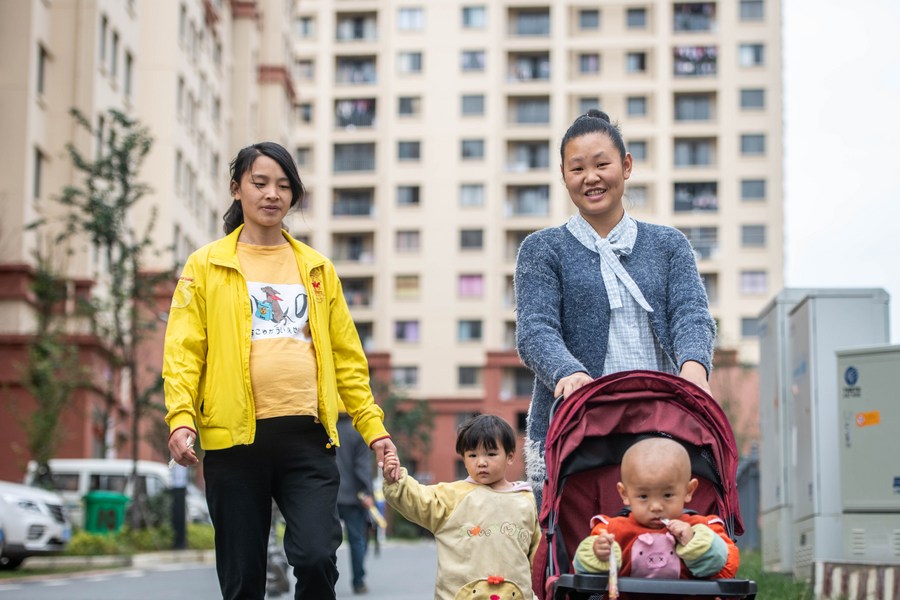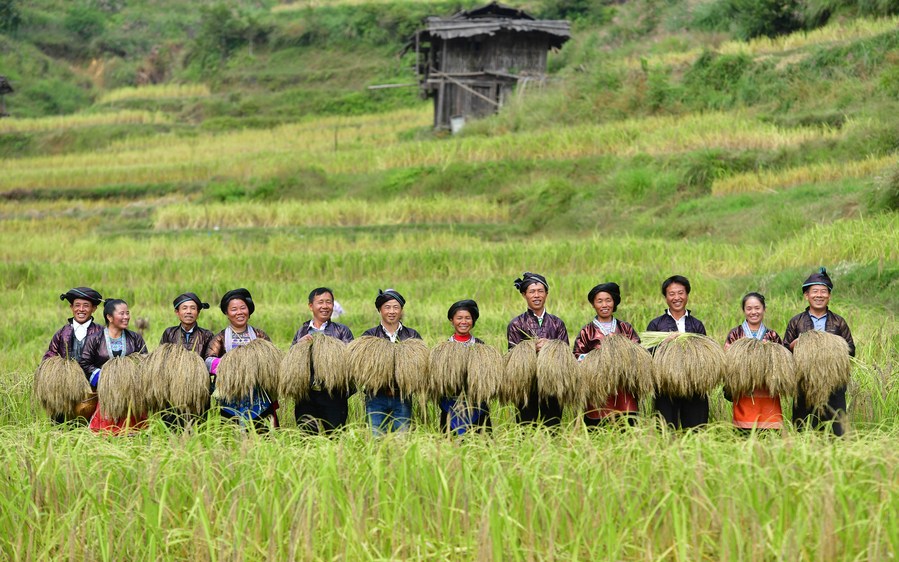China's battle against poverty

Liu Yuan (R), a primary-level poverty relief official, talks with a senior villager in Balu Village of Rongjiang County, Qiandongnan Miao and Dong Autonomous Prefecture, southwest China's Guizhou Province, Nov. 16, 2020. [Xinhua/Yang Ying]
BEIJING -- China has vowed to eliminate absolute poverty by the end of this year, 10 years ahead of the poverty-eradication schedule set by the United Nations 2030 Agenda for Sustainable Development.
As the clock ticks towards the deadline, what progress has China achieved? How is poverty defined? How is the country fulfilling this goal? What are the future challenges? Here are some explanations.
REMARKABLE PROGRESS
China has recently achieved the feat of removing all remaining counties from the country's poverty list.
Southwest China's Guizhou Province announced last week that its last nine impoverished counties had been lifted out of absolute poverty, which means all registered impoverished counties in the world's most populous country have shaken off poverty.
Over the past 40-plus years of reform and opening-up, more than 700 million people in China have been lifted out of poverty, contributing more than 70 percent of the global reduction in poverty.
The country's success in poverty reduction has been complimented by UN Secretary-General Antonio Guterres, who called the achievements "very strong."

Residents take their kids for a walk at a poverty-relief resettlement site in Zhenxiong County of Zhaotong City, southwest China's Yunnan Province, Sept. 24, 2020. [Xinhua/Hu Chao]
POVERTY STANDARD
Since the start of reform and opening-up in 1978, China has adjusted the standard for absolute poverty several times to keep it in line with the country's social and economic development.
The current rural poverty line is 2,300 yuan per person per year at the 2010 price level. The specific figure is subject to adjustment as the country's price levels change. In 2019, the poverty line was 3,218 yuan (about 490.61 U.S. dollars).
Considering factors such as purchasing power parity and China's urban-rural price gap, such a standard is higher than the World Bank's extreme-poverty benchmark of 1.9 U.S. dollars per person per day, according to the National Bureau of Statistics.
China's poverty-eradication standard, in fact, cannot be defined by income numbers alone. Besides lifting annual income, the country's basic poverty-eradication campaign also helps to ensure that the poor have sufficient food and clothing, as well as access to compulsory education, basic medical services and safe housing.
FIGHTING POVERTY WITH STRATEGIES
To achieve the goal of eradicating absolute poverty, China has pledged to prioritize the development of agriculture and rural areas, and to fully advance rural vitalization in its new development stage.
The country is improving the quality, efficiency and competitiveness of agriculture, carrying out rural-development initiatives, and giving rural construction an important position in socialist modernization. Efforts are also being made to deepen rural reforms, through which the country is expected to improve the integrated urban-rural development mechanism.
Meanwhile, it has strived to reduce rural poverty with technological innovations that help boost agricultural production. In the past five years, China has focused on the technical bottleneck of the agricultural industry and promoted more than 50,000 new varieties and technologies to increase the quality and efficiency of this industry in poor areas.
Additionally, continued efforts have also been made to safeguard the employment of the poor, with more than 90 percent of the registered poverty-stricken population having received support in employment or benefited from poverty-relief policies through industrial development in rural areas.

File photo show that villagers display freshly-harvested rice in Dali Village of Rongshui Miao Autonomous County, south China's Guangxi Zhuang Autonomous Region. [Xinhua/Huang Xiaobang]
MORE WORK TO BE DONE
Although China is on track to eradicate absolute poverty by the end of 2020, tackling relative poverty will be a long-term task. Therefore, the country needs to take measures to further bolster its achievements in tackling poverty, said Ou Qingping, deputy-director of the State Council Leading Group Office of Poverty Alleviation and Development, at a press conference Wednesday.
Ou also stressed efforts to optimize the monitoring-and-assisting mechanism to prevent people from falling back into poverty.
After winning a complete victory against poverty, the country will allow a transition period during which policies and assistance to help the poor will remain unchanged, with the overall stability of its measures being maintained. Follow-up work in poverty-alleviation relocation will be stressed, while the rural social-security and relief system will be improved, Ou said.
The country is formulating more measures to promote rural vitalization, while consolidating poverty-reduction achievements, Ou added.
























